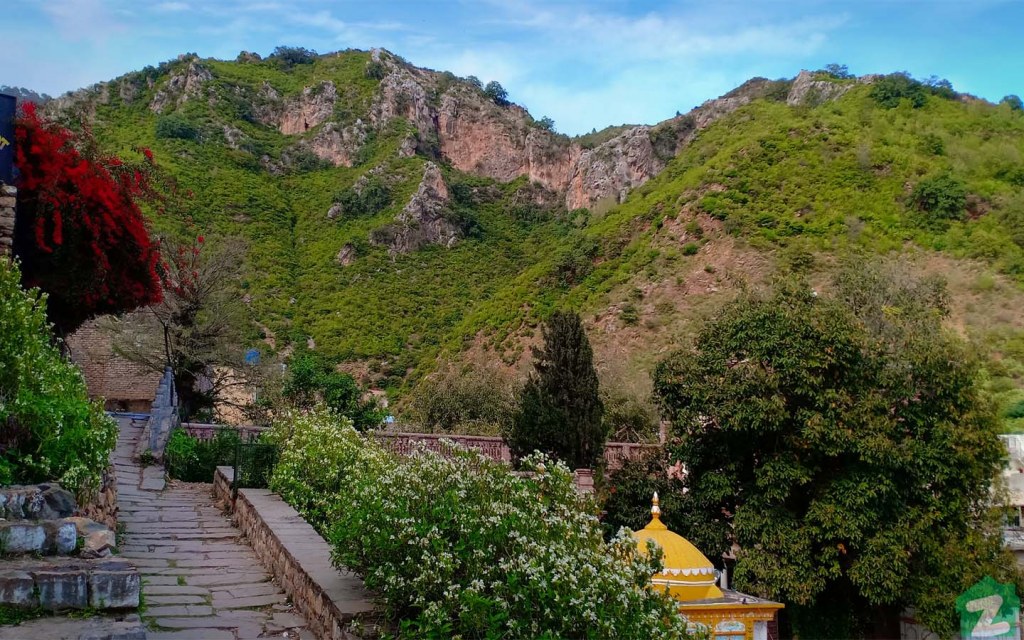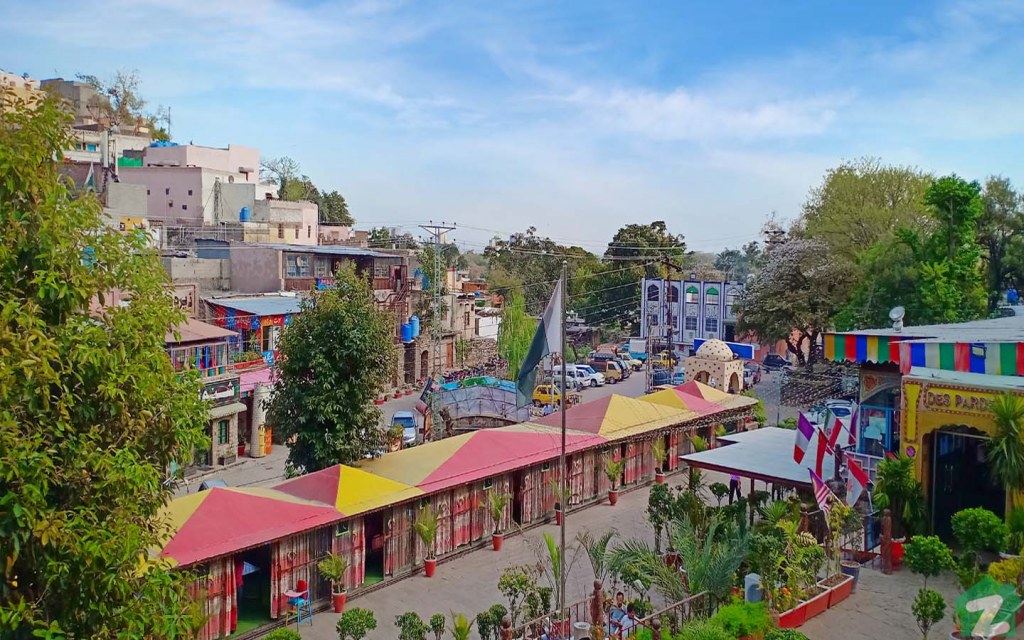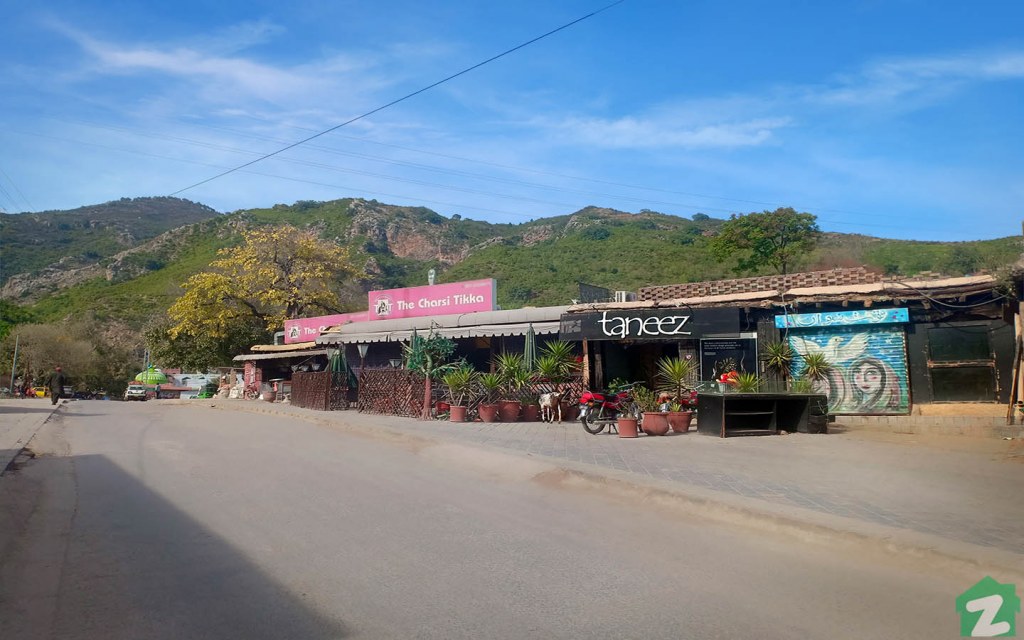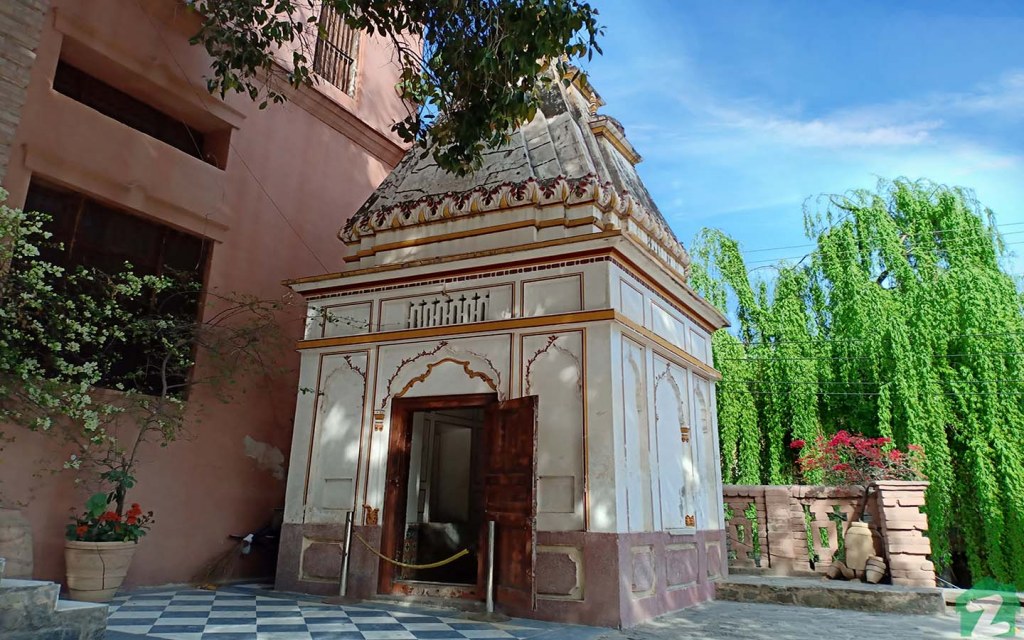Lahore is not the only historical and culturally-rich city in Punjab. Sitting on the slopes of picturesque Margalla Hills, the serene Saidpur Model Village once served as a garden resort for Mughal Emperor Jahangir. It was also a significant place of worship for Hindus and Sikhs alike.
A few centuries down the road, Saidpur has now become one of the most popular tourist attractions in Islamabad. It houses a Sufi shrine, a Hindu temple and a Gurdawara all in the same area.
Located less than 10 minutes’ drive away from the F-6 Markaz, this beautiful model village in Islamabad is a living heritage site. It not only pays homage to Muslim, Hindu and Sikh cultures but also depicts the rich history of the Pothohar region.
History of Saidpur Village

Nestled in the lap of lush green Margalla Hills, Saidpur Model Village wasn’t always known by its current name. Back in the year 1530, the village was called Fatehpur Baoli after its founder Mirza Fateh Ali. Nearly 50 years later in 1580, Hindu Commander Raja Maan Singh built a temple in Saidpur. The temple housed tall brass statues of goddesses Kali and Lakshmi. Moreover, he also constructed four sacred ponds in the area named Ram Kund, Lakshman Kund, Sita Kund, and Hanuman Kund.
During the Mughal era, Emperor Akbar bequeathed the village to Sultan Said Khan Ghakar for the services of his father Sultan Sarang Khan in the fight against Sultan Sher Shah Suri, the founder of short-lived Sur dynasty in the sub-continent. The village was then named Saidpur after its new owner, who later gifted it to his daughter.
In 1609, Emperor Jahangir mentioned Saidpur village in his famous autobiography ‘Tuzk-e-Jahangiri.’ He referred to this village as a ‘place beyond Rawalpindi’ and indicated he had stayed there on his way to Kabul. He was also married to Sultan Said Khan’s daughter.
Up until the years leading to the partition in 1947, Hindu devotees in the area used to gather in Saidpur to celebrate the festival of Baisakhi. In the early 20th century, a Sikh Gurdawara was built next to the temple.
However, things took a drastic turn after the creation of Pakistan. As most Hindus in northern Punjab migrated to India, they also took with them their sacred statues, leaving the temple abandoned. Meanwhile, the Sikh school in Saidpur was turned into a primary school for girls.
Restoration and conservation of Saidpur Village

Over the course of the next two years, a team of engineers renovated the dilapidated temple, laid down cobblestone roads and restored the old buildings. The primary school, the Gurdawara and an old Sufi tomb in the village were also preserved.
In 2008, CDA successfully converted Saidpur into a tourist spot set on the foothill of Margalla.
Major Tourist Attractions in Saidpur Model Village
If you want to spend a few hours away from the city but don’t want to travel too far, you must plan a visit to Saidpur Model Village.Restaurants in Saidpur

Here is a list of some of the most popular restaurants in Saidpur Model Village:
- Des Pardes
- Dera Pakhtoon
- Andaaz
- Tira
- Polo Lounge
- Kehwa
- Lahore Chatkhara
Souvenir shops and art gallery in Saidpur

This tourist attraction in Islamabad also hosts quite a few shops. These stores sell everything from antique jewellery and clay pottery to brass artefacts and silverware. If you are looking to buy some really stunning and creative souvenirs, this is the place to go. You can also trek up a cobbled pathway to the Sufi shrine that sits atop a small hill.
Despite the renovation and preservation work, Saidpur Model Village still paints a very vivid picture of a peaceful and simple life in Pakistani villages. From local tea stalls to the presence of hand pumps on street corners, spending a day exploring this breathtaking village should be on everyone’s bucket list.
If you are staying in the area, you can also plan a day trip to the scenic Margalla Hills.

The location of Saidpur Model Village also makes it an ideal picnic spot for the residents of Islamabad.
It is important to note the authuroities did not force any villagers to leave their homes during the renovations. The locals who lived in the area still have their houses intact. In fact, most of the villagers have started working as ushers and servers in the newly built restaurants.
Meanwhile, some parts of Saidpur, particularly those not frequented by the tourists, still don’t have proper roads and lack several other facilities. However, according to the reports, major development work is currently underway.



0 Comments